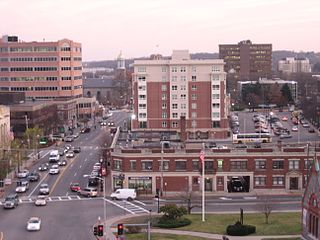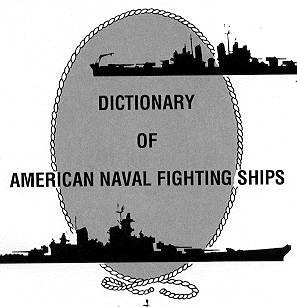General Dynamics Electric Boat (GDEB) is a subsidiary of General Dynamics Corporation. It has been the primary builder of submarines for the United States Navy for more than 100 years. The company's main facilities are a shipyard in Groton, Connecticut, a hull-fabrication and outfitting facility in Quonset Point, Rhode Island, and a design and engineering facility in New London, Connecticut.

USS Holland (SS-1) was the United States Navy's first modern commissioned submarine, although not the first military submarine of the United States, which was the 1775 submersible Turtle. The boat was originally laid down as Holland VI at the Crescent Shipyard of Elizabeth, New Jersey for John Holland's Holland Torpedo Boat Company, and launched on 17 May 1897. She was acquired by the USN on 11 April 1900 and commissioned on 12 October 1900, Lieutenant H. H. Caldwell commanding.

USS Montpelier (SSN-765), a Los Angeles-class submarine, is the third ship of the United States Navy to be named for Montpelier, Vermont. The contract to build her was awarded to Newport News Shipbuilding and Dry Dock Company in Newport News, Virginia on 6 February 1987 and her keel was laid down on 19 May 1989. She was Christened April 6, 1991, launched on 23 August 1991 sponsored by Mrs. Nancy Hayes Sununu, and commissioned on 13 March 1993 with Commander Victor Fiebig in command.

USS New Hampshire (SSN-778), a Virginia-class nuclear-powered attack submarine, is the fourth vessel of the United States Navy to be named for the state of New Hampshire. She is the first of the Virginia Block II submarines to enter service. Her name was awarded to the submarine after a letter-writing campaign by the third-graders from Garrison Elementary School and sixth graders from Dover Middle School in Dover to their members of Congress, the state governor, and the Secretary of the Navy.

USS West Virginia (SSBN-736) is a United States Navy Ohio-class ballistic missile submarine. She has been in commission since 1990. She is the third U.S. Navy ship to be named for West Virginia, the 35th state, and the 11th of 18 Ohio-class submarines.

USS Ulysses S. Grant (SSBN-631), a James Madison-class fleet ballistic missile submarine, was the third ship of the United States Navy to be named for Ulysses S. Grant (1822–1885), American Civil War general and the 18th President of the United States (1869-1877).

USS Simon Lake (AS-33) was the lead ship of her class of submarine tenders in the United States Navy, named for Simon Lake, a pioneering designer of early submarines.

USS Bergall (SSN-667), a Sturgeon-class attack submarine, was the second ship of the United States Navy to be named for the bergall, a small fish found along the Atlantic coast of North America from the Chesapeake Bay to Labrador.

USS Sunfish (SSN-649), a Sturgeon-class attack submarine, was the second ship of the United States Navy to be named for the ocean sunfish, a marine species having a deep body truncated behind, and high dorsal and anal fins.

USS Ray (SSN-653), a Sturgeon-class attack submarine, was the second ship of the United States Navy to be named for the rays.

USS Pargo (SSN-650), a Sturgeon-class attack submarine, was the second ship of the United States Navy to be named for the pargo, also known as the red snapper, a fish of the genus Lutjanus found in the West Indies.

USS Silversides (SSN-679), a Sturgeon-class attack submarine, was the second ship of the United States Navy to be named for the silverside, a small fish marked with a silvery stripe along each side of its body.

USS Springfield (SSN-761), a Los Angeles-class submarine, is the fourth ship of the United States Navy to bear the name. The boat was named in honor of both the cities of Springfield, Illinois and Springfield, Massachusetts.

USS Norfolk (SSN-714), a Los Angeles-class attack submarine, was the third ship of the United States Navy to be named for Norfolk, Virginia.

USS Emory S. Land (AS-39) is a United States Navy submarine tender and the lead ship of her class. She was named for Admiral Emory S. Land.

USS Charles Lawrence (DE-53) was a Buckley-class destroyer escort of the United States Navy, commissioned in 1943. She was converted to a high speed transport in 1944 and redesignated APD-37. After being decommssioned in 1946, she was finally scrapped in 1965.

USS Fulton (AS-11) was the leader of her class of seven submarine tenders, launched on 27 December 1940 by Mare Island Navy Yard and sponsored by Mrs. A. T. Sutcliffe, great-granddaughter of Robert Fulton. Fulton was commissioned on 12 September 1941, with Commander A. D. Douglas in command.

USS Dixon (AS-37) was an L. Y. Spear-class submarine tender, in service to the United States Navy from 1971 through 1995. Dixon was named for George E. Dixon, commander of the Confederate submarine H. L. Hunley.

USS Timbalier (AVP-54) was a Barnegat-class seaplane tender of the United States Navy. She was commissioned shortly after the end of World War II, and served between 1946 and her decommissioning in 1954. She later saw commercial service as the Greek cruise ship MV Rodos.

























